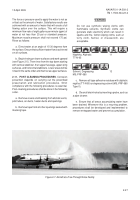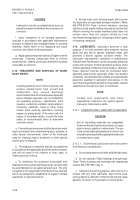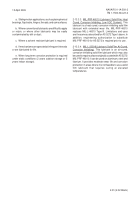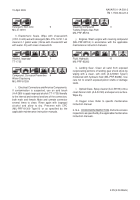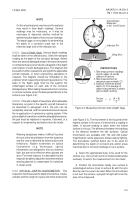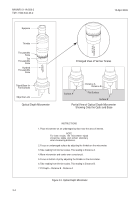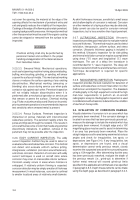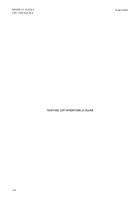TM-1-1500-344-23-2 - Page 61 of 240
3-1
NAVAIR 01-1A-509-2
TM 1-1500-344-23-2
15 April 2009
CHAPTER 3
INSPECTION AND CORROSION PRONE AREAS
SECTION I. INSPECTION AND EVALUATION
3-1. GENERAL.
3-1.1. PURPOSE. Frequent corrosion inspections are
essential to the overall corrosion control program. The
costs resulting from corrosion can be minimized by
early detection, identification, and treatment. Without
regular systematic inspections, corrosion will seriously
damage aviation equipment. This chapter describes
procedures for basic visual inspection for corrosion and
illustrates some of the signs of corrosion damage.
3-1.2. RESPONSIBILITY. Corrosion detection is
everyone’s responsibility. Since corrosion can occur
almost anywhere on aviation equipment, all maintenance
personnel must be able to identify and report corrosion
problems. Personnel performing any scheduled
inspections shall be qualified in corrosion detection and
shall have attended appropriate corrosion prevention
and control courses as established by the parent service
organization.
3-1.3. FREQUENCY OF INSPECTIONS. The minimum
frequency and extent of these inspections are
established by the aircraft programs of the parent service
organization. However, during scheduled or
unscheduled maintenance actions on aviation
equipment or components, the area involved as well as
those within 3 feet or 36 inches (18 inches on each side)
of the repair or treatment area shall be visually inspected
for corrosion. Additional inspections may be necessary
in areas which are particularly prone to corrode, such as
magnesium gear boxes, wheel and flap wells, and bilge
areas. Areas which are corrosion prone are discussed
in Section II of this chapter.
3-1.4. GENERAL INSPECTIONS. A general inspection
of aviation equipment or components is performed as
follows:
a. Clean the area thoroughly (as described in
Chapter 2) or, for water sensitive areas, wipe the area
with a clean cloth dampened with an approved solvent.
CAUTION
Prior to removing any access covers or panels
primed with TT-P-2760 flexible primer, score
the sealant at the edges of the cover/panel with
a sharp plastic tool to prevent fraying the paint
finish when the panel is removed.
b. If corrosion is suspected, examine the area with
a 10X magnifying glass and flashlight. Examine edges
of skin panels, rivet heads, and corrosion prone areas.
If there are blisters, bubbles, or other coating irregularities
present, attempt to dislodge the paint by scraping with
a sharp plastic tool. If paint does not easily dislodge and
corrosion is not suspected, the irregularity is probably
confined to the paint film itself and no further action
should be taken. When corrosion is suspected but no
irregularities are present, apply a strip of ASTM D6123
Type II flatback masking tape over the clean, dry area.
Hand rub the tape for several strokes in order to assure
good adhesion, and remove the tape with an abrupt
lifting motion. Where paint is removed, inspect and
determine the degree of corrosion (see paragraph 3-4).
c. Remove corrosion (Chapter 4), clean and treat
the surface (Chapter 5), and paint (Appendix A).
3-1.5. DETAILED INSPECTIONS. A detailed inspection
of aviation equipment or components shall be performed
as a result of damage found during general inspections
if extensive or severe corrosion is suspected, and as
specified in appropriate aircraft maintenance manuals.
Parts shall be carefully inspected for signs of corrosion
using the tools and procedures listed in Table 3-1. See
Section II of this chapter for information on common
corrosion prone areas.
Back to Top

